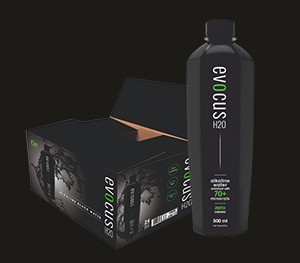‘Necessity is the mother of invention’ is a statement that’s apt for all small and big inventions since ancient times. Indeed, communications, information and entertainment needs led to the invention of the television, the radio, telephones, mobile phones, the internet and much more. Similarly, as contaminated water took millions of lives and caused extreme illness in people, water purifiers and RO systems were invented.
Without knowing the source, most of us are very casual about our water intake and its quality. City people believe water from ROs, bottled water in offices and packaged mineral water on the go are all safe and clean. But can we be sure the water we drink daily is 100% safe? Not really! As a result, we may be vulnerable to serious health issues.
With growing contaminants in water, the safety and accessibility of drinking water is a universal concern. In fact, water is a prerequisite for improving living standards worldwide. Typically, water-deprived areas are economically backward too, with residents struggling to survive.
As per a WHO report, 50% of the global population will be living in water-stressed zones by 2025. As if this wasn’t bad enough, globally, 844 million people presently lack access to clean drinking water and at least 2 billion consume water contaminated with faeces.
Understanding Water Contamination
Water may be contaminated in various ways: microorganisms such as bacteria and parasites; human or animal faeces; harmful chemicals from industrial waste or crop sprays; etc., all of which make it toxic. Besides, contamination can occur due to overuse of nitrates in fertilizers, which enter the water with land runoff. Several heavy metals (such as lead or mercury) can enter the water supply from natural deposits or due to improper disposal of pollutants. Also, old lead pipes can leech into drinking water.
Contaminated water is dirty as well as deadly, causing an estimated 502,000 deaths annually. Such water contains infectious agents, radioactive substances and toxic chemicals – transmitting diarrhoea, cholera, typhoid, dysentery, polio virus and other ailments that can maim and kill.
Simply boosting access to safe drinking water can ensure massive improvements in public health.
Ensuring Safe Drinking Water
For generations, the benefits of boiling water before drinking have been praised. But does boiling contaminated water really make it safe to drink? That depends entirely on the nature of contaminants. Although boiling kills germs, it doesn’t curb lead, nitrates, pesticides and similar substances. What’s worse, since boiling reduces the quantity of water, it increases the concentration of contaminants. So the remedy worsens the problem!
Another way of removing organic contaminants affecting taste and odour is by using activated carbon filters. Activated carbon can remove chlorination by-products and metals such as copper, lead, solvents and pesticides. Likewise, excess calcium, magnesium or other minerals can be removed via ion exchange units holding activated alumina, which could be used along with carbon absorption or reverse osmosis filtration methods.
Reverse osmosis (RO) units with carbon are equally efficient in removing nitrates, sodium, pesticides and petrochemicals while the distillation technique can create distilled water by boiling and then condensing the vapour back into liquid.
Ultimately, although each method helps, no system removes all contaminants. Therefore, before installing any system, it’s best to have the water in your area tested by a certified laboratory first to know its TDS (total dissolved solids) level. Besides, whatever system one uses, it’s important to maintain the water filtering system by regular cleaning. Otherwise, contaminants accumulate in the filter, worsening the water quality.
Finally, if you are serious about personal water consumption, only tracking the quantity isn’t enough – be assured about its purity too before quenching your thirst.
- July 23, 2020
- Alkaline water
